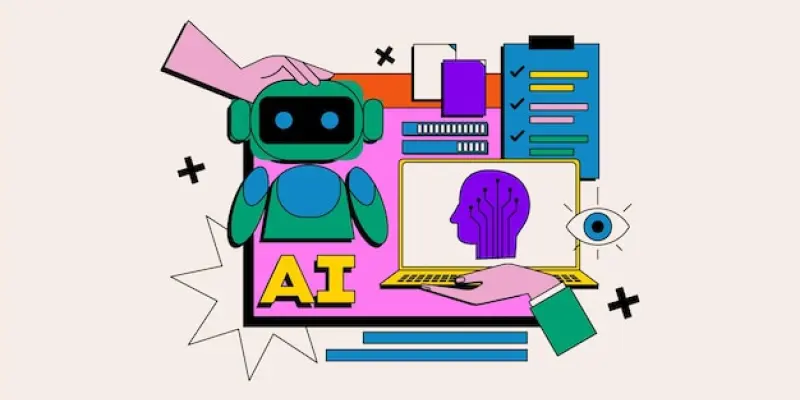Recent advancements in artificial intelligence have set a new benchmark in the field of image interpretation and generation, illustrating the significant strides made by OpenAI. The groundbreaking development of the GPT-4o model has enabled a substantial enhancement in AI’s ability not only to interpret images with striking precision but also to recreate them with stunning visual effects. These effects often mimic the aesthetic quality associated with Studio Ghibli’s famous art style. Such capability was a formidable challenge for AI, particularly when it came to comprehending textual content within AI-generated images. OpenAI’s recent achievements signal a profound evolution in the way AI processes and understands visual data.
The Dawn of Advanced AI Reasoning Models
Introducing GPT-4o: A Milestone in Vision
The GPT-4o model is at the forefront of this visual revolution, offering unparalleled interpretation and image generation capabilities that have captured attention globally. It demonstrates an exceptional ability to understand and translate images into contextual information, a task that previously posed significant hurdles for AI. The distinguishing feature of the GPT-4o model is its proficiency in handling text elements within images, a domain that historically saw limited success. The model’s utility extends beyond simple image analysis, as it synthesizes visuals into coherent narratives or information, effectively bridging a gap between text and imagery processing. Moreover, the integration of visual reasoning with existing functions like data analysis and web searches affords GPT-4o the versatility needed for diverse practical applications. This combination allows for rich, multimodal analyses that provide deeper insights from varied image types. Such capabilities enable it to draw conclusions or offer interpretations without explicit text prompts, enhancing its utility in fields requiring detailed visual comprehension. This development not only positions OpenAI as a leader in the domain but also accelerates its competitive edge in the evolving landscape of AI technology.
Pioneering Models: Building on Success
OpenAI’s release of two other reasoning models, the o3 and o4-mini, further exemplifies its strategic focus on creating more refined AI solutions. The o3 model, heralded as the “most powerful reasoning model,” has been designed to improve interpretation, coding, and scientific reasoning significantly. It enhances visualization and perceptual capabilities, thereby touching new frontiers in AI’s understanding of complex data. On the other hand, the o4-mini model, though smaller, stands out for its speed and cost-efficiency, making it ideal for tasks requiring quick yet reliable reasoning. Both models leverage sophisticated algorithms that enable incorporating imagery into AI’s reasoning processes. The act of assimilating visual data into decision-making allows these models to “think with images.” This ability to perform actions such as cropping and zooming not only magnifies their analytical potential but also revolutionizes how AI interacts with visual information. As the models integrate these features more fully, the potential applications expand, illustrating AI’s role as a transformative tool.
Expanding AI’s Multimodal Capabilities
Diverse Applications in Visual and Textual Integration
The integration of image processing with text-based reasoning in AI ushers in an era where technology can seamlessly blend visual and text data. The potential impact extends across numerous fields, from education, where AI can interpret visual learning materials, to professional sectors where detailed image analysis and interpretation are essential. By enhancing how AI deals with image and text conjunctions, OpenAI’s models contribute to an enriched understanding of complex information ecosystems. Additionally, this technological advancement promises significant progress in accessibility, allowing users to interact with AI without the need for detailed text prompts. Users receive accurate interpretations and analysis derived from visual stimuli alone, enhancing the intuitive use of AI in everyday applications. This innovation not only redefines user interactions with technology but also has broader societal implications, enhancing AI’s supportive role in assisting with complex decision-making processes.
Future Prospects and Competitive Landscape
OpenAI’s strides in image and text integration mark a significant repositioning within the competitive landscape of AI development. As AI becomes more adept at interpreting and utilizing images, its applications in real-time contexts broaden considerably. The GPT-4o model’s capabilities, mirrored by those of Google’s Gemini and similar technologies, indicate a race towards more intuitive and immersive AI interactions with the real world. These advancements open doors to new possibilities, such as the live interpretation of dynamic visual data, thereby enhancing the immediacy and relevance of AI solutions in practical scenarios.
While the current exclusivity of this technological advancement is limited to paid members of ChatGPT Plus, Pro, and Team, initiatives for broader accessibility could democratize its use. The progression of these technologies suggests a future where AI’s interaction with visual data becomes a standard feature across platforms, potentially leading to innovations that are yet unseen. As AI continues to evolve, the integration of visual and text reasoning stands poised to lead significant breakthroughs in technology interaction and application.
Charting the Path Forward
Recent developments in artificial intelligence represent a significant milestone in the realm of image interpretation and generation, marking notable progress achieved by OpenAI. The introduction of the GPT-4o model has considerably advanced AI’s capability, allowing it to not only interpret images with exceptional precision but also recreate them with visually appealing effects. These effects often emulate the distinctive artistic style renowned from Studio Ghibli’s creations. This achievement was previously a daunting challenge for AI, especially regarding the understanding of textual elements within AI-generated visuals. OpenAI’s latest breakthroughs underscore a transformative shift in AI’s capacity to process and understand visual data. The implications extend beyond mere aesthetics; they pave the way for improved interaction between humans and machines, as AI becomes adept at perceiving and interpreting the world in a manner akin to human cognition, offering new pathways for creativity and technological growth.

